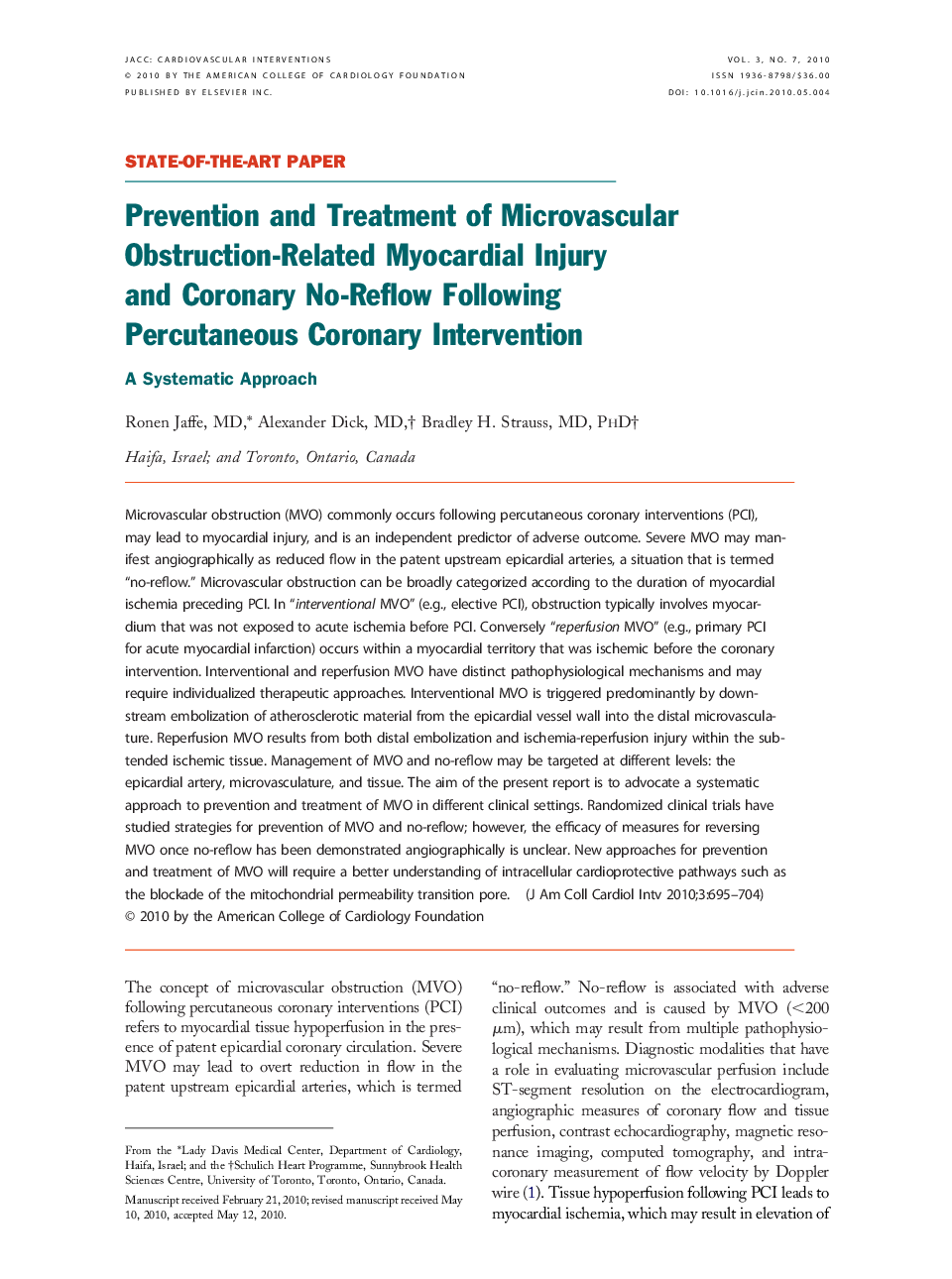| کد مقاله | کد نشریه | سال انتشار | مقاله انگلیسی | نسخه تمام متن |
|---|---|---|---|---|
| 2941165 | 1177058 | 2010 | 10 صفحه PDF | دانلود رایگان |

Microvascular obstruction (MVO) commonly occurs following percutaneous coronary interventions (PCI), may lead to myocardial injury, and is an independent predictor of adverse outcome. Severe MVO may manifest angiographically as reduced flow in the patent upstream epicardial arteries, a situation that is termed “no-reflow.” Microvascular obstruction can be broadly categorized according to the duration of myocardial ischemia preceding PCI. In “interventional MVO” (e.g., elective PCI), obstruction typically involves myocardium that was not exposed to acute ischemia before PCI. Conversely “reperfusion MVO” (e.g., primary PCI for acute myocardial infarction) occurs within a myocardial territory that was ischemic before the coronary intervention. Interventional and reperfusion MVO have distinct pathophysiological mechanisms and may require individualized therapeutic approaches. Interventional MVO is triggered predominantly by downstream embolization of atherosclerotic material from the epicardial vessel wall into the distal microvasculature. Reperfusion MVO results from both distal embolization and ischemia-reperfusion injury within the subtended ischemic tissue. Management of MVO and no-reflow may be targeted at different levels: the epicardial artery, microvasculature, and tissue. The aim of the present report is to advocate a systematic approach to prevention and treatment of MVO in different clinical settings. Randomized clinical trials have studied strategies for prevention of MVO and no-reflow; however, the efficacy of measures for reversing MVO once no-reflow has been demonstrated angiographically is unclear. New approaches for prevention and treatment of MVO will require a better understanding of intracellular cardioprotective pathways such as the blockade of the mitochondrial permeability transition pore.
Journal: JACC: Cardiovascular Interventions - Volume 3, Issue 7, July 2010, Pages 695–704